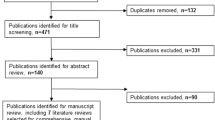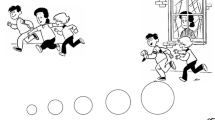Abstract
The interest in quality of life (QoL) studies has increased as they are useful instruments to evaluate and compare medical care delivery and the impact of health interventions. The perception of QoL differs among individuals. Its characterization is especially difficult in the pediatric age group as each developmental stage presents specific demands. The prevalence of congenital lower urinary dysfunction is high and their management changes the daily routine of the patients and their families. In a cross-sectional study, we evaluated the QoL of 28 children and adolescents with urinary malformations and their caregivers using the Autoquestionnaire Qualité de Vie Enfant Imagé (AUQUEI) and Short-Form 36 (SF-36), respectively, and compared the results with 38 healthy control age-paired children/caregivers. Four questions were added to patients' questionnaire to evaluate issues related to their urological management. Our results show lower AUQUEI total scoring in the patients’ group (p < 0.0213, Fisher’s exact test), who also present problems in dealing with social aspects, such as being at classroom, manifest negative feelings in relation to diurnal urinary losses but seem to be well adapted to intermittent urethral catheterization. A tendency for worse QoL scores in the patients’ group caregivers was detected in the SF-36 pain and physical limitation domains.
Similar content being viewed by others
References
The WHOQoL Group (1994) The development of the World Health Organization Quality of Life Assessment Instrument (the WHOQoL). In: Orley J, Kuyken W (eds) Quality of life assessment: international perspectives. Springer, Berlin Heidelberg New York
Ravens-Sieberer U, Bullinger M (1998) Assessing health-related quality of life in chronically ill children with the German KINDL: first psychometric and content analytical results. Qual Life Res 7:399–407
Pais-Ribeiro JL (2004) Quality of life is a primary end-point in clinical settings. Clin Nutr 23:121–130
Macdonagh R (1996) Quality of life and its assessment in urology. Br J Urol 78:485–496
Goldbeck L, Melches J (2005) Quality of life in families of children with congenital heart disease. Qual Life Res 14:1915–1924
Wallander JL, Schmitt M, Koot HM (2001) Quality of life measurement in children and adolescents: issues, instruments and applications. J Clin Psychol 57:571–585
Stjernqvist K, Kockum CC (1999) Bladder exstrophy: psychological impact during childhood. J Urol 162:2125–2129
Schast AP, Zderic SA, Richter M, Berry A, Carr MC (2008) Quantifying demographic, urological and behavioral characteristics of children with lower urinary tract symptoms. J Pediatr Urol 4:127–133
Herrera SEMC (2004) Calidad de vida de los cuidadores familiares que cuidan niños en situaciones de enfermedad crónica. Av Enferm 22:39–46
Magnificat S, Dazord A (1997) Évaluation de la qualité de vie de l´enfant: validation d´un questionnaire, premiers resultants. Neuropychhiatr Enfance Adolesc 45:6–114
Assumpção F Jr, Kuczynski E, Sprovieri MH, Aranha EMG (2000) Escala de avaliação de qualidade de vida. Arq Neuropsiquiatr 58:119–127
Ciconelli RM, Ferraz MB, Santos WS, Meinão I, Quaresma MR (1999) Tradução para a língua portuguesa e validação do questionário genérico de avaliação de qualidade de vida SF-36 (Brasil SF-36). Rev Bras Reumatol 39:143–150
Abd-el-Gawad G, Abrahamsson K, Hellström AL, Hjälmås K, Hanson E (2002) Health-related quality of life alter 5–12 years of continent ileal urostomy (dock reservoir) in children and adolescents. Sand J Urol Nephrol 36:40–45
Merenda LA, Duffy T, Betz RR, Mulcahey MJ, Dean G, Pontari M (2007) Outcomes of urinary diversion in children with spinal cord injuries. J Spinal Cord Med 30:S41–S47
Tobito AM, Escobar AM, Gonzáles IC, Mejía N (2008) Calidad de vida de pacientes pediátricos con lupus eritematoso sistémico. Repert Med Cir 17:54–60
Kuczynski E, Thomé-Souza MS, Fiore LA, Valente KDR, Assumpção FB Jr (2008) Quality of life and childhood epilepsy. Rev Bras Psiquiatr 30:399–408
Gladh G, Eldh M, Mattsson S (2006) Quality of life in neurologically healthy children with urinary incontinence. Acta Paediatr 95:1648–1652
Bower WF, Wong EMC, Yeung CK (2006) Development of validated quality of life tool specific to children with bladder dysfunction. Neurourol Urodyn 25:221–227
Rosenbaum P (2008) Children´s quality of life: separating the person from the disorder. Arch Dis Child 93:100–101
Author information
Authors and Affiliations
Corresponding author
Rights and permissions
About this article
Cite this article
Lopes, M., Ferraro, A., Dória Filho, U. et al. Quality of life of pediatric patients with lower urinary tract dysfunction and their caregivers. Pediatr Nephrol 26, 571–577 (2011). https://doi.org/10.1007/s00467-010-1744-2
Received:
Revised:
Accepted:
Published:
Issue Date:
DOI: https://doi.org/10.1007/s00467-010-1744-2




